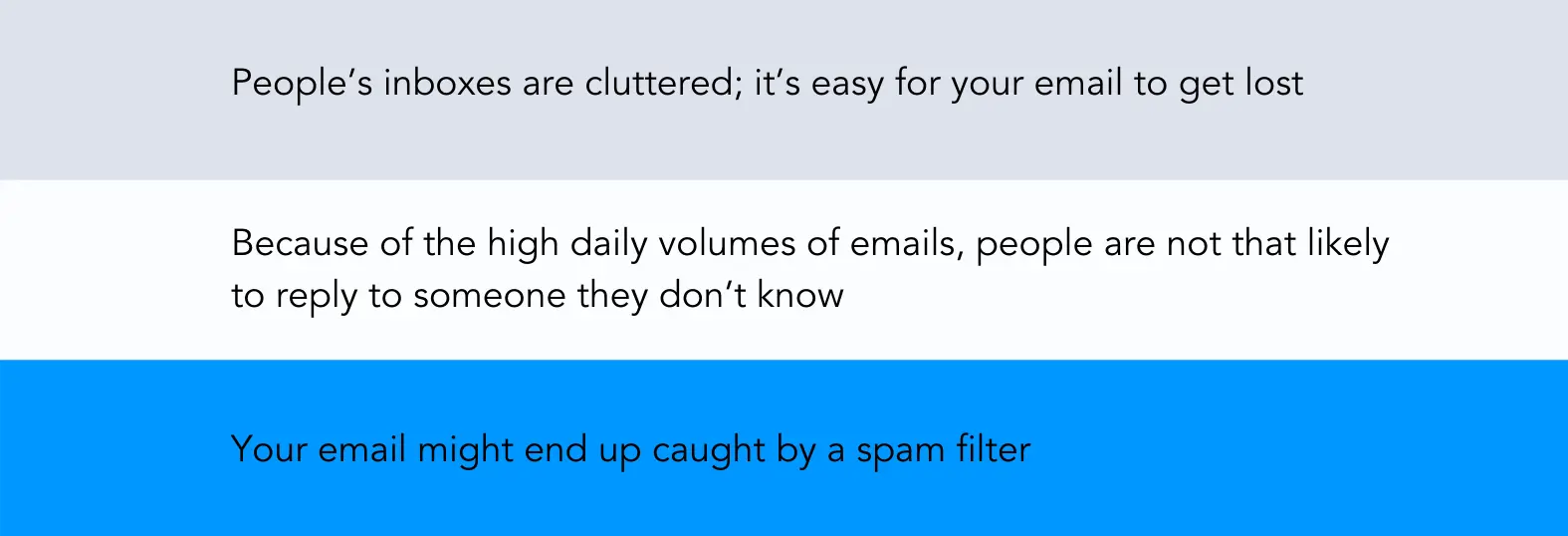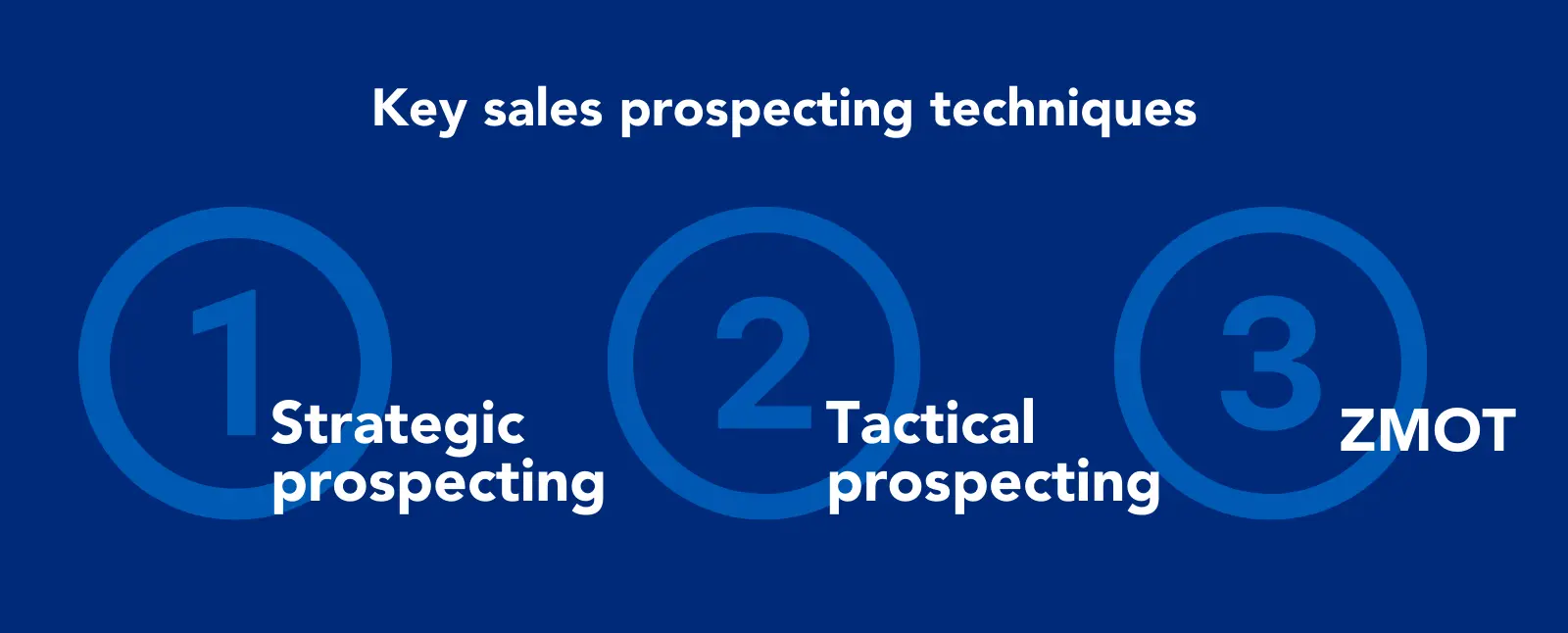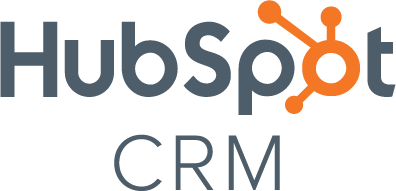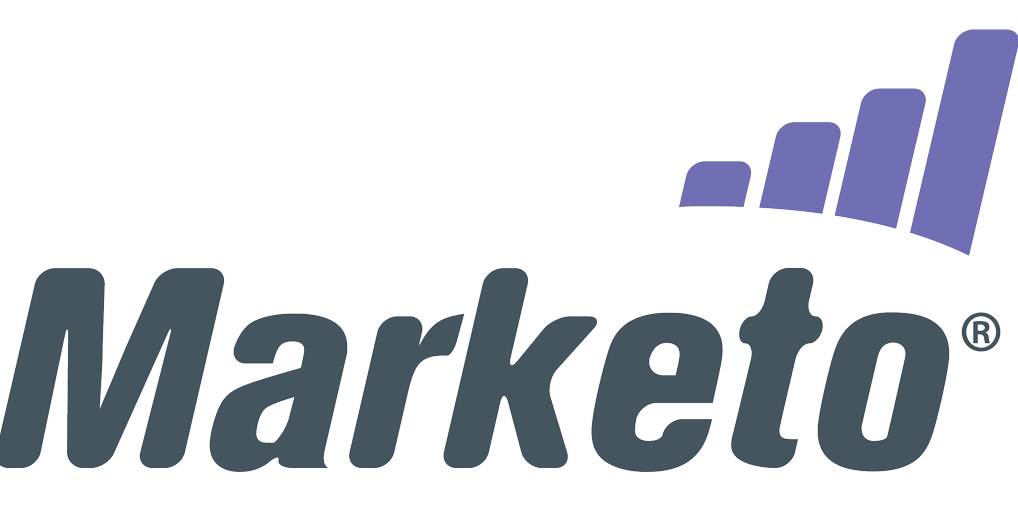Guide to Sales Prospecting: Tips, Techniques and Tools
Useful tools:
1. Newoldstamp - Email signature marketing
2. Mailchimp - Email builder and sender
3. Hubspot Email Marketing - Marketing automation platform
4. MailerLite - Landing page builder
5. Canva - Online tool for making designs
1. What is sales prospecting?
2. Leads vs. prospects: are they the same?
3. Why you need to prospect your sales in inbound marketing
4. The sales prospecting process
5. Ways to prospect in sales
6. Key sales prospecting techniques
7. Tools for sales prospecting
8. Tips to be better at sales prospecting
Small businesses that are only beginning their journey towards growth and scaling find customers a real trick. In the beginning, there are only "potential customers" who may even not know about your existence. Your task is to detect them, approach them, and convert them into buying customers.
This path is full of challenges, such as:
- Where and how do you find your prospects?
- What channels do you use to inform them about your solutions?
- In what ways do you approach them?
- How do you retain and convert them?
- How do you both minimize your efforts and maximize the outcome?
These are the questions you should be asking yourself when planning your sales prospecting activities. Take a look at the sales prospecting process and see how it can be implemented most effectively. Below we'll share with you a general how-to: prospecting in sales, as well as individual tips for prospecting in sales.
What is sales prospecting?
So what is prospecting in sales? It is the process of searching for and building relationships with potential buyers so that they convert into paying customers with time. The central event here is a conversation, and the desired goal is a sales meeting, which might result in a purchase.
In marketing, we usually talk about lead nurturing, whereas in sales, it's all about prospecting. So, is there a substantial difference between prospects and leads?
Leads vs. prospects: are they the same?
Leads are potential customers who have previously expressed their interest in your company or product in a certain way. For example, they have visited your website, fill in the contact form, registered for your webinar, or read your blog. Can these be prospects? Sure. Two things make prospects different from leads. Firstly, they were not necessarily actively interested in your company or product. Secondly, they match your buying persona.

Sometimes, the same person can be both a lead and a prospect, but, at other times, these are different groups of potential customers. A prospect is a lead with prior knowledge about you. A lead is a prospect who fits your buyer persona profile.
Why you need to prospect your sales in inbound marketing
Now that you know what sales prospecting is, let's see why you and your company need to take this process seriously.
The very purpose of inbound marketing is to attract the right people's attention to your brand. In the end, the goal is either brand awareness or sales. So even if you create content to get as many people interested in your brand, you always do it to generate more sales.
While you can wait till the sales occur organically, in B2B, the rules are slightly different. First, you need to start a conversation with your potential buyers to purchase your service or product. And here is where sales prospecting comes in handy.
This is hard and time-consuming work. So carefully planned and executed prospecting strategy helps to save hours of work and tons of effort.
Next, we are going to talk about prospecting in sales: the process and individual steps.
The sales prospecting process
Let's view how to sales prospect and get the most result out of it. Consider the steps below when planning your prospecting activities.
Set a Goal
To set your goals effectively, you'll need to picture your sales process - funnel and to set intermediate objectives. Start with setting a final goal that you need to achieve. For example, you want to make 10 sales per month. Now how many prospects end up buying your product? Let's say it's 1 out of 40. This means that you'll need to connect with 400 prospects every month to generate those sales.
Create an ideal prospect persona
We've come up with 400 people assuming that you've already sorted out those who are potentially interested in your product. Otherwise, you'll have to connect with many more individuals to just test the waters.
This is why it's crucial to create an ideal customer profile right in the beginning. It will help you understand where to search for these people, how to contact them, and how to communicate with each of them.

source: cience
To start, look at your existing customers. Who are they? What do they have in common? What do they do? Where did you find them? (Or where did they find you?)
Study
It's important to find out as much information as possible about every single prospect. This will help you to find the right approach for each decision-maker. Answering some of the following questions will help you:
- What company do they work for?
- Do they operate in your company’s business area?
- Do they match the characteristics of your buyer persona?
- Are they experiencing problems that your product helps to solve?
- What are their current challenges?
- What is the best way for you to contact them?
Segment and create your lists
Now that you've researched your prospects, it's time to segment them. Segmenting will help to customize your messages better and ensure a more personal approach. There are lots of characteristics you can use to categorize your prospects. A simple spreadsheet can help you organize your lists.

Plan your prospecting activity and outreach
Once you've created your lists and sorted your contacts by certain parameters, it's time to create a plan and incorporate it into your calendar. Start with estimating how many people you will need to contact each month, week, and day, and plan the activities accordingly. Allow some time for warming up, approaching, and following up with your prospects. Also, make sure you revise your plan regularly as you find out which times for contacting your prospects work better.
Measure
As you move along with your plan, take notes and record your progress. Measure your achievements so that you can review this information later and act upon it. Please note that you won't remember all the details of your interactions, so be sure to write down as much detail as possible.
Update and repeat
At the end of each period (day, week, month, year), draw up conclusions and compare your targets to the real results. Have you achieved your goals? If not, how many of your targets were met? How can you improve the outcome? What can be adjusted in the entire prospecting process to ensure that your future goals are met? Then, reiterate the process with the necessary improvements.
Ways to prospect in sales
Now let's get to the most exciting (and most time-consuming) part, contacting the prospects. There are different ways of how to do sales prospecting, meaning it's practical and the most critical activity — approaching individuals. Calls, emails, social media networks, referrals, webinars, and networking are some of the ways to establish contact with potential customers.
Cold emailing
Cold emailing might be the simplest way for sales reps to contact prospects. What's best about it, it allows the recipient to consider the information in it and make a more conscious decision. Including a professional email signature in your cold emails can help establish credibility and make a stronger impression. However, there is a serious drawback: the ROI is pretty low here due to many reasons:

On the other hand, highly personalized and timely emails have a chance to be noticed, opened, and replied to.
Cold calling
The best sales reps are extremely good at cold calling. If you need some help on how to perfect this skill, check out these cold calling tips. Although it can be much more time-consuming than writing and sending emails, it allows the sales team to establish a more personal connection with your prospects. It also grants you flexibility as you adjust to your collocutor during a conversation. Still, people usually don't like phone calls from someone they don't know, which is why not everyone will pick up their phone in the first place. To make these interactions more effective, many teams are now turning to cold calling software and AI-based call centers, which can help personalize the approach and improve the likelihood of making a successful connection.
Social outreach
According to LinkedIn, 75% of B2B people trust social media when they make buying decisions. Social networks allow potential buyers to connect with brands and engage in conversations. Depending on your business and its audience, specific social channels would bring you better results than others. For example, while Facebook, Twitter, or Instagram would work well for B2C brands, LinkedIn, especially its InMail feature, would be a better fit for B2Bones.
References
These are the prospects who learned about you through your current clientele. For example, OpenView Labs discovered that 73% of individuals occupying executive positions prefer dealing with sales reps who were recommended to them.
How to get referrals? Just ask your existing customers to recommend you to their contacts.
Networking
Another way is to prospect for people within your current network. These could be your friends, acquaintances, as well as members of the same reference groups. You can also get potential buyers among your contacts on social networks and online groups. You can meet some of them when attending events.
Webinars
Conduct webinars for your target audience and reach out to those who have registered. You can also approach the ones who never attended. Some of these people might have signed up in the hope of solving a specific problem, but they never made it to the webinar because they might have needed a more personal approach.
Although you might be better at mastering one channel than others, consider using all of them simultaneously with different buyer personas.
Key sales prospecting techniques
In prospecting, consistency is the key. To gain and nurture the prospects, you need to stick to your plan, timeline, and chosen approach. You can choose among the three prospecting techniques: strategic prospecting, tactical prospecting, and ZMOT prospecting.

Strategic prospecting
Strategic sales prospecting requires that you define and select your prospects thoroughly before contacting them. In this framework, you don't make broad lists but instead work with a limited number of people. In strategic sales prospecting, your sales process and marketing teams work closely together to ensure a high level of personalization.
Tactical prospecting
In tactical sales prospecting, you work with a broad list of people. Your main effort is aimed at facilitating conversations with individuals on the list. It's a more time-consuming approach that requires a lot of warming up. Like in strategic prospecting, it is also important here that sales and marketing teams unite their efforts, with the sales team leading the process.
ZMOT prospecting
The full name of this technique is the Zero Moment Of Truth. Inbound marketing should be at the core of it. In ZOMT, the marketing department creates and executes campaigns with a clear image of the target audience (buyer persona) and their current needs in mind. SEM can be used here, among other methods.
These are the basics that you need to know about sales prospecting. However, this guide on prospecting sales is incomplete without special tools that will make your endeavors much more manageable.
You can save some time when sales prospecting with a CRM or a Customer Relationship Management platform. There is an immense variety of them available, but they all do one thing: help you track interactions and manage relationships with your prospects and paying customers. Consider it a database with your prospects' contacts, relevant information about them, and a history of communicating with your brand in any possible way.
Let's look at some of the popular tools.

Their company offers sophisticated solutions for salespeople and marketers. For example, with their Sales CRM, you can manage a database of your existing customers, collect leads and nurture them, launch marketing campaigns, and follow your customers' journey along the sales funnel.

This free tool from HubSpot automates the sales process. It starts with collecting information on your leads and tracking all your interactions with them. With tools like this CRM, you can schedule and make calls, register sales, and more.

Marketo's Account-Based Marketing solution allows you to manage and prioritize your sales process and prospecting, plan targeted marketing campaigns, and track their success. It also visualizes the customer journey for you and helps you measure your revenue based on sales made.

This solution from LinkedIn allows you to find prospects, analyze them, and manage interactions. The best thing about Sales Navigator is that it automatically tracks and updates information on your prospects, thanks to its integration with the most prominent business social media.

This CRM serves as a universal platform for all your sales-related activities. Not only does it help you find the leads and store the information on them along with your interactions, but it also helps you manage your sales-related tasks. For example, you can schedule activities and set reminders. What's more, you can make calls right from the platform, which are then tracked by the system automatically.

SuperOffice is a sales and marketing CRM that stores information on your leads and your engagements with them. Apart from that, it manages and tracks your marketing campaigns. It also serves you as a task management system with calendar features.
As you can see, there are quite a few handy tools tailored to the needs of salespeople and marketers. You can select one that would work for you based on your company's size and client base and the specifics of your product, and the audience whose problems it solves.
Tips to be better at sales prospecting
So far, we've covered the ABCs of sales prospecting. We overviewed the ways of acquiring prospects and building relationships with them and the help of CRMs. We saw 3 main approaches to prospecting for sales and considered the main elements of a successful prospecting strategy.
Now it's time to sum it up by sharing with you the best sales prospecting tips. We've hand-picked 8 of them which we think are the most valuable.
Dive deeper for a more personal approach
When researching your prospects, don't limit yourself to basic information only. Dive deeper into more meaningful insights into your potential customers. Knowing their names and where they work is not enough. Try to understand them better by finding information on their hobbies (for example, by connecting with them on Instagram), by learning what they care about (for example, through their LinkedIn or Twitter updates). Finally, don't forget about their pain points. This will help you connect with the person on a more personal level and improve the quality of your relationship from the start.
Spend time on qualifying prospects
Quality should be more important than quantity. Rather than making huge lists with leads who more or less fit in with your target audience, focus on individuals who match your buyer persona. Prioritize your prospects by the probability of making a purchase and spend most of your time engaging with the top ones. This will save you a lot of your time and effort.
Don't sell. Build relationships
Nobody likes sales pitches anymore. Your communication should be all about your (potential) customers and not you. Try to provide value by offering a solution to the real problems - main pain points, by listening to people and understanding their current needs. Don't ask for anything — offer something instead.
Build trust.

Create a plan for building relationships and start building them from the start.
Make prospecting your daily routine
Engaging with prospects requires your dedication and presence. So don't stop building relationships once you've started. Remind people about yourself and be there for them. Plan your activities. Plan them at the beginning of each week or even month. And stick to your schedule.
It means you should book certain time slots daily for all kinds of prospecting activities: collecting information, collaborating with Marketing on executing various campaigns, reaching out, staying in touch, and following up.
Write scenarios and scripts
When communicating with prospects, choose the right words that work for certain types of people. Draft a few scripts and, depending on the situation, stick to one of them during your conversation with a prospective client. It doesn't mean you should read it. On the contrary, you must sound natural and spontaneous. However, there must be a scenario that you follow.
This is also helpful to predict the objections and respond to them immediately.
Always revise your scripts. Get rid of the ineffective lines and add the ones that work the best. You can find an example of a cold calling script here.
Find new methods and approaches
As we have seen above, there are many ways of sales prospecting. So don't stick to just one, but explore them all.
In the end, you might focus on the one that works best for you, but you still shouldn't ignore the other ones. Use all the available channels to connect with your prospects, try various strategies, and use tools that will help you to analyze your results. Remember to revise and repeat continuously.
Warm-up your lead before a call
Although cold calls might still work in some instances, you should always warm up your prospects before calling them. This will increase your chances of establishing a good relationship. There are many ways to prepare prospects for communication with you. For example, get introduced to them through a shared connection. Or connect with them online via a suitable social network. Finally, engage with them socially by commenting on their posts or retweeting their status.
Follow up through other channels
If you've exchanged a few emails with your prospect, this doesn't mean you should limit your communication to email only. Use all the possible ways to connect, remind them of yourself, and stay in touch. Write emails, shoot messages, send thank-you cards, share links to helpful information, comment on their statuses. Do whatever you find appropriate in each particular case.
Conclusion
We hope you now have got a decent understanding of sales prospecting. Although there is always a lot to be said about the art of sales prospecting, there are some general takes-out you need to remember about.
- Be human
- Do your research
- Know and understand your prospects
- Don’t ask, offer instead
- Use different channels of communication
- Don’t neglect your prospects
- Follow up
- Try again in case you’ve failed
- Analyze and improve



